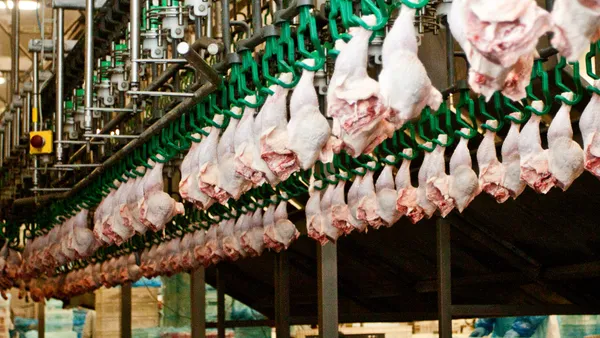Dive Brief:
-
The Food and Drug Administration requested $7.2 billion as part of President Joe Biden’s fiscal 2025 proposed budget to “strengthen and modernize” the agency’s ability to promote a safe and nutritious food supply in the U.S. The request includes an increase of $495 million — 7.4% above the FY 2023 budget.
-
The FDA has faced scrutiny recently as states work to pass legislation preventing companies from using food additives like red dye 3 that the agency has approved as safe. Jim Jones, FDA’s first deputy commissioner for human foods, said last week on a webinar hosted by the Alliance for a Stronger FDA that the funding will provide necessary resources to regulate these ingredients.
-
In addition to prioritizing food safety, Jones said the administration hopes it can encourage more companies to file with the FDA to receive generally recognized as safe notifications for certain ingredients. The result, he said, would increase consumer confidence in the food system.
Dive Insight:
The requested budget, which covers the period from Oct. 1, 2024 through Sept. 30, 2025, includes $6.5 million to prevent foodborne illness, $4.5 million to ensure the chemicals used in food products are safe and $4 million to reduce diet-related chronic disease. Trade groups like the National Confectioners Association believe the FDA is the only authoritative body fit to make calls on these regulatory decisions.
“The FDA needs to flex its authority as the rightful national regulatory decision maker and leader in food safety,” the NCA said in a statement sent to Food Dive.
The Biden administration has faced criticism in recent months over certain food additives banned in other countries that have received the go-ahead in the U.S.
In October, California became the first state to prohibit four food additives — brominated vegetable oil (BVO), potassium bromate, propylparaben and red dye 3. Other states, such as New York, Pennsylvania, and Illinois are among a handful currently considering copycat proposals.
In the webinar, Jones said that for the FDA to respond in an informed way and review the use of food additives, it will need more funding.
Although the laws being passed by states cite health issues such as cancer, reproduction and childhood behavioral and developmental problems as reasons for prohibiting food additives, the scientific backing behind these decisions has been debated.
“It’s time to stop pretending that magazine publishers and state legislators have the scientific expertise and qualifications to make these very important determinations,” the NCA said. “States usurping FDA’s authority does nothing but create a patchwork of inconsistent requirements that increase food costs, create confusion around food safety, and erode consumer confidence.”
Jones said the FDA is planning to allocate some of the budget to strengthen the compliance program for its GRAS requirements with the hope that it will incentivize companies to use it more often.
GRAS — or generally recognized as safe — is what the FDA uses to issue pre-market approval for certain chemicals and ingredients in food products.
Jones said the administration believes the confidence in the U.S. food system increases when GRAS notifications have been filed. He said agency experts are allowed to determine whether the practices of food companies comply with the requirements.
“Enhancing food chemical safety is one of the ways we are working toward ensuring that food is a source of wellness,” Jones said. “When we have more resources, we can do more. It is clear that Americans expect the FDA to be doing more to ensure the safety of their foods.”












